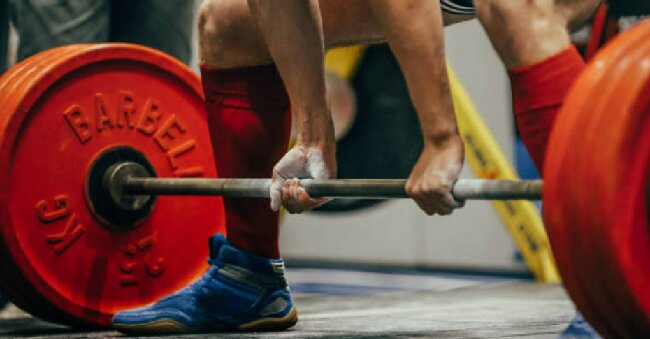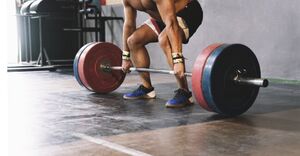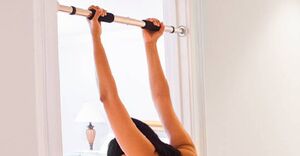
3 Powerful Key Differences Barbell Between Olympic, Standard, and Specialty Barbells
Are you looking to elevate your workout routine with the use of barbells but not sure where to start?
In this comprehensive guide, we will explore the different types of barbells – Olympic, Standard, and Specialty – to help you choose the right one for your fitness goals.
We will discuss the benefits and drawbacks of each type and provide tips on how to select the perfect barbell for your workout. Let’s dive in and find out which barbell is the best fit for you!
What are Barbells?
Barbells are essential tools in the world of strength training and weightlifting, commonly used for various fitness purposes. They consist of a long metal bar with weights attached at each end, allowing individuals to perform a wide range of exercises to enhance their physical fitness.
Whether you are aiming to build muscle mass, increase strength, or improve overall endurance, barbells can be tailored to suit your specific training goals. Incorporating barbell exercises such as squats, deadlifts, bench presses, and overhead presses can target multiple muscle groups simultaneously, providing a comprehensive workout. The versatility of barbells allows individuals to progressively overload their muscles, stimulating growth and adaptation. Performing compound movements with barbells not only enhances strength but also improves coordination and stability, essential for functional fitness.
What are the Different Types of Barbells?
When it comes to barbells, there are primarily three main types to consider: Olympic barbells, Standard barbells, and Specialty barbells. Each type comes with its own set of features and purposes, catering to diverse needs and preferences in the realm of weightlifting and fitness.
Olympic Barbells
Olympic barbells are specifically designed for powerlifting and Olympic weightlifting, characterized by their high performance, optimal grip, and suitability for a wide range of exercises that focus on strength and technique.
These barbells are essential tools for individuals looking to enhance their strength and technique in various exercises. The specialized design of Olympic barbells ensures that weightlifters and powerlifters can execute movements with precision and control, allowing for optimal muscle engagement and development.
With their superior grip, these barbells enable athletes to maintain a firm hold during challenging lifts, enhancing stability and reducing the risk of injuries. Whether you’re aiming to improve your clean and jerk technique or boost your deadlift strength, Olympic barbells provide the versatility needed to target specific muscle groups and achieve your training goals.
Standard Barbells
Standard barbells are known for their versatility, durability, and affordability, making them a popular choice among beginners, intermediate, and advanced weightlifters looking for a reliable and cost-effective option to support their fitness journey.
These standard barbells are designed to accommodate a wide range of exercises, from basic squats and deadlifts to more advanced Olympic lifts, catering to individuals at various stages of their training experience. With their sturdy construction and ability to withstand heavy loads, standard barbells are durable enough to handle intense workout sessions over an extended period, providing users with long-lasting performance without the need for frequent replacements. Their competitive pricing makes them an attractive investment for those seeking quality equipment without breaking the bank.
Specialty Barbells
Specialty barbells are tailored for specific exercises, such as bodybuilding routines targeting different muscle groups, often accompanied by specialized accessories to enhance workout effectiveness and target specific areas of the body.
These specialized barbells like the trap bar are excellent for targeting the back and lower body, providing a unique grip positioning that helps in engaging muscles differently.
By incorporating accessories like resistance bands or chains, lifters can intensify their workouts, challenging muscle groups with increased resistance at specific points in the movement.
For instance, using a cambered barbell can isolate and strengthen the biceps, while a safety squat barbell is perfect for developing quadriceps and improving squat form.
The versatility of these specialty barbells opens up a plethora of possibilities for bodybuilders looking to optimize muscle targeting and overall workout performance.
How Do You Choose the Right Barbell for Your Workout?
Selecting the right barbell for your workout regimen involves considering various factors, such as your technique proficiency, safety requirements, and maintenance preferences to ensure a seamless and effective weightlifting experience.
Understanding the importance of proper barbell selection is crucial in achieving your fitness goals while minimizing the risk of injuries. When choosing a barbell, pay attention to safety features like knurling for grip, sleeves rotation for smooth movements, and load capacity to match your strength level.
Consider the maintenance requirements, such as keeping the barbell clean from sweat and debris to prevent rust and ensure longevity. These small actions can contribute significantly to the durability and effectiveness of your weightlifting equipment.
Consider Your Fitness Goals
Before selecting a barbell, it is crucial to align your choice with your fitness goals and training objectives, considering factors such as versatility, brand reputation, and user reviews to ensure it meets your specific workout requirements.
Taking the time to evaluate your fitness goals allows you to make a more informed decision when choosing a barbell. Whether your focus is on strength training, powerlifting, or Olympic lifting, selecting a barbell that aligns with your objectives can enhance your performance and progress.
Checking brand reputation can also give you insight into the quality and durability of the barbell, ensuring it withstands your training regimen. Exploring user feedback can provide valuable insights into the practicality and functionality of different barbells, aiding you in selecting the best option for your workout needs.
Know Your Strength and Experience Level
Understanding your strength levels and experience in weightlifting is essential when choosing a barbell, as it determines the appropriate grip, weight capacity, and features that align with your proficiency, whether you are a beginner, intermediate, or advanced lifter.
Assessing your strength levels not only ensures safety during lifting but also optimizes your performance and progress in strength training. When selecting a barbell, consider the grip comfort to prevent slips and enhance control, the weight capacity to support your lifting goals, and the specific design tailored to your proficiency level.
For beginners, a barbell with moderate weight and easy grip may be ideal, while intermediate lifters may benefit from a higher weight capacity and improved durability. Advanced lifters might seek specialty barbells for more advanced techniques and heavier loads.
Consider the Types of Exercises You Will Be Doing
When choosing a barbell, it is essential to consider the specific exercises you intend to perform, such as squats, bench presses, deadlifts, or bodybuilding routines, to ensure the barbell’s compatibility with your workout regimen and targeted muscle groups.
For instance, if your focus is primarily on powerlifting exercises like squats and deadlifts, opting for a standard barbell with a good knurling and suitable tensile strength would be ideal to withstand heavy loads and provide a secure grip.
On the other hand, if you are more into bench presses or bodybuilding routines, a slightly shorter or lighter barbell may offer better control and maneuverability for isolation exercises targeting specific muscle groups.
Understanding the link between exercise types and barbell selection can significantly enhance your training experience and help you achieve your fitness goals more effectively.
Budget and Space Constraints
Considering your budgetary constraints and available workout space is vital in selecting the right barbell, as it influences the cost, additional accessories needed, plate compatibility, and suitability for both home gyms and gym environments.
By understanding your financial limits and the area where you plan to work out, you can make informed decisions when choosing a barbell.
Opting for cost-effective options like basic Olympic barbells can be a smart choice. These barbells are versatile and durable, suitable for various exercises.
Investing in essential accessories such as collars for securing weights, and considering plate variations like rubber bumper plates for noise reduction in home setups, can enhance your lifting experience.
Adapting your barbell choices to fit the limited space of a home gym is manageable with compact options like shorty or space-saving barbells designed for smaller areas.
What are the Benefits of Using Different Types of Barbells?
Utilizing different types of barbells offers a myriad of benefits tailored to specific workout preferences and performance requirements. From enhanced powerlifting capabilities with Olympic barbells to versatile training options with standard barbells, each type provides unique advantages in the realm of weightlifting and fitness.
Specialty barbells, on the other hand, cater to specialized exercises and movements, such as the hex bar for deadlifts or the curl bar for bicep curls, allowing for targeted muscle engagement and improved form.
Olympic barbells are designed for maximum performance, featuring precise weight distribution and a standardized length for competitive powerlifting and weightlifting events.
Standard barbells, with their classic design and moderate weight capacity, are ideal for a wide range of exercises, making them a staple in any gym setting.
Olympic Barbells: Ideal for Powerlifting and Olympic Weightlifting
Olympic barbells are ideal for powerlifting and Olympic weightlifting enthusiasts due to their high weight capacity, smooth sleeve rotation, and specialized design features that optimize performance. While they offer exceptional benefits for strength training and technique enhancement, there are considerations such as cost and maintenance that users need to be aware of.
The weight capacity of Olympic barbells is crucial for advanced lifters who are constantly pushing their limits and aiming to lift heavier loads. With the ability to handle significant weights, these barbells provide a platform for progressive overload, allowing individuals to continuously challenge and improve their strength levels.
The smooth sleeve rotation of Olympic barbells plays a vital role in facilitating dynamic movements during lifts, reducing the risk of injury and enhancing overall performance. It is essential for users to regularly maintain and check the equipment for wear and tear to ensure safety and longevity.
Standard Barbells: Versatile and Affordable
Standard barbells are valued for their versatility and affordability, making them a popular choice among fitness enthusiasts looking for reliable equipment that offers moderate weight capacity and durability. While they may have limitations in terms of weight capacity, their cost-effective nature and durability make them a recommended option for various workout routines.
Their simple yet effective design allows individuals to perform a wide range of exercises targeting different muscle groups, offering a full-body workout experience. The affordability of standard barbells makes them a practical choice for those setting up a home gym on a budget or looking to expand their collection of fitness equipment without breaking the bank. Despite their lower weight capacities compared to Olympic barbells, standard barbells are still suitable for most individuals looking to build strength and improve their overall fitness level.
Specialty Barbells: Designed for Specific Exercises
Specialty barbells are crafted for targeted exercises and specialized workout routines, offering advantages in specific training areas but may come with limitations in terms of versatility and higher cost due to their tailored design features and accompanying accessories that enhance workout effectiveness.
These barbells are designed with a specific purpose in mind, such as improving strength, power, or grip strength for dedicated lifters. For instance, a trap barbell is ideal for movements like deadlifts and shrugs, while a cambered barbell targets stabilizing muscles during squats.
Due to their specialized nature, these barbells may not be as versatile as a standard Olympic barbell, requiring users to invest in multiple variations for a comprehensive workout regimen. The added customization provided by specialty barbells can be valuable for individuals seeking to maximize their training outcomes through exercise specificity.
What are the Drawbacks of Using Different Types of Barbells?
While different types of barbells offer unique benefits, they also come with specific drawbacks that users should consider. From the higher cost and specialized equipment requirements of Olympic barbells to the limited weight capacity and durability of standard barbells, understanding the potential limitations is essential for informed decision-making in weightlifting and fitness.
Similarly, specialty barbells, while designed for specific exercises like powerlifting or Olympic weightlifting, may lack the versatility needed for a broader range of workouts. These specialized barbells can be more expensive and require additional accessories, such as collars or plates, which can add to the overall cost. Their durability may vary based on the materials used, making it important to assess whether the investment aligns with long-term fitness goals and preferences.
Olympic Barbells: Expensive and Require Specialized Equipment
Olympic barbells are known for their premium materials, specialized knurling patterns, and high-performance capabilities, but they also come with a higher price tag and the need for specialized equipment such as bumper plates and collars to maximize their potential in powerlifting and weightlifting routines.
The materials used in crafting Olympic barbells play a crucial role in their overall quality and durability. Most premium Olympic barbells are made from top-grade steel, which not only provides excellent strength but also ensures longevity even with regular heavy use. The specialized knurling patterns on these barbells offer an improved grip, allowing athletes to maintain control during intense lifts. These design features, along with precision engineering, contribute to enhancing performance and technique. Due to their superior quality and construction, Olympic barbells generally require a higher initial investment compared to standard barbells.
Standard Barbells: Limited Weight Capacity and Durability
Standard barbells may exhibit limitations in weight capacity and durability compared to Olympic counterparts, requiring regular maintenance and care to ensure longevity and safe usage, particularly in gym settings where equipment wear and tear are more prevalent.
Regular inspection of standard barbells in a gym environment is crucial to identify any signs of damage or stress on the equipment, such as bent bars or loose screws, which could compromise user safety.
Educating gym members on proper barbell usage and storage practices can contribute to prolonging the equipment’s lifespan and preventing avoidable damage.
Implementing a systematic cleaning and lubrication schedule for the barbells can also help in preventing rust or corrosion, ensuring they stay functional for prolonged periods.
Specialty Barbells: Limited Versatility and Higher Cost
Specialty barbells, while offering targeted advantages for specific exercises, may have limitations in terms of versatility and come with a higher cost due to their specialized design features and accompanying accessories. Expert opinions on the utility of specialty barbells can provide valuable insights into their effectiveness for targeted workout routines.
These specialized barbells are engineered to cater to niche fitness needs, such as powerlifting, Olympic weightlifting, or rehabilitation exercises, where their unique features can enhance performance and safety.
The trade-off for these specialized benefits is a reduced ability to adapt to a wide range of exercises compared to traditional barbells. This lack of versatility may limit their overall utility in a home gym setting, where space constraints and budget considerations play a significant role in selecting equipment.
Therefore, seeking guidance from fitness professionals or trainers can help individuals evaluate whether investing in specialty barbells aligns with their specific training goals and budget constraints.
External Resource;https://nutroone.com/en/product-category/weight-train/barbells-and-weight-plates/




No Comments